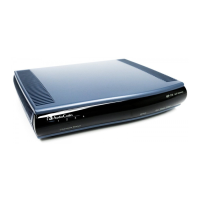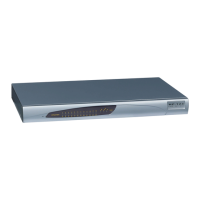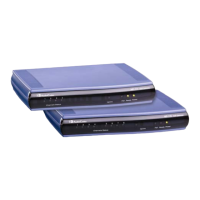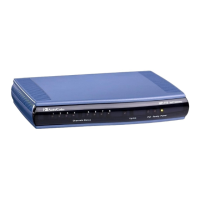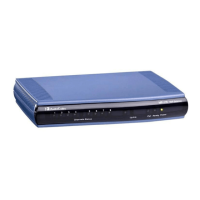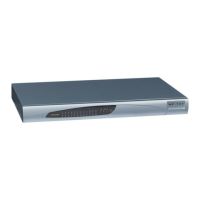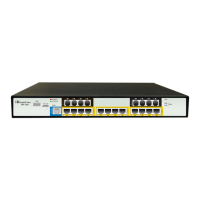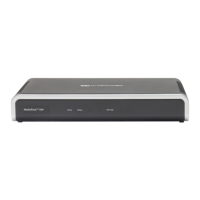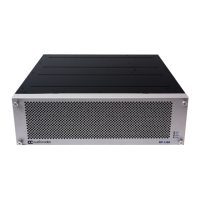Version 6.2 397 February 2011
SIP User's Manual 10. Configuration Parameters Reference
Parameter Description
prefix, removing the "ext=" parameter, and adding the extension number
as the suffix (e.g., e622125519100104). Once modified, the device can
then manipulate the number further, using the Number Manipulation
tables (see ''Number Manipulation and Routing Parameters'' on page
474) to leave
only the last 3 digits (for example) for sending to a PBX.
EMS: Use SIP URI For
Diversion Header
[UseSIPURIForDiversion
Header]
Defines the URI format in the SIP Diversion header.
[0] = 'tel:' (default)
[1] = 'sip:'
[TimeoutBetween100And
18x]
Defines the timeout (in msec) between receiving a 100 Trying response
and a subsequent 18x response. If a 18x response is not received
before this timer expires, the call is disconnected.
The valid range is 0 to 32,000. The default value is 0 (i.e., no timeout).
[IgnoreRemoteSDPMKI]
Determines whether the device ignores the Master Key Identifier (MKI) if
present in the SDP received from the remote side.
[0] Disable (default)
[1] Enable
Web: Comfort Noise
Generation Negotiation
EMS: Comfort Noise
Generation
[ComfortNoiseNegotiatio
n]
Enables negotiation and usage of Comfort Noise (CN).
[0] Disable
[1] Enable (default)
The use of CN is indicated by including a payload type for CN on the
media description line of the SDP. The device can use CN with a codec
whose RTP time stamp clock rate is 8,000 Hz (G.711/G.726). The static
payload type 13 is used. The use of CN is negotiated between sides.
Therefore, if the remote side doesn't support CN, it is not used.
Regardless of the device's settings, it always attempts to adapt to the
remote SIP UA's request for CNG, as described below.
To determine CNG support, the device uses the
ComfortNoiseNegotiation parameter and the codec’s SCE (silence
suppression setting) using the CodersGroup parameter.
If the ComfortNoiseNegotiation parameter is enabled, then the following
occurs:
If the device is the initiator, it sends a “CN” in the SDP only if the
SCE of the codec is enabled. If the remote UA responds with a “CN”
in the SDP, then CNG occurs; otherwise, CNG does not occur.
If the device is the receiver and the remote SIP UA does not send a
“CN” in the SDP, then no CNG occurs. If the remote side sends a
“CN”, the device attempts to be compatible with the remote side and
even if the codec’s SCE is disabled, CNG occurs.
If the ComfortNoiseNegotiation parameter is disabled, then the device
does not send “CN” in the SDP. However, if the codec’s SCE is
enabled, then CNG occurs.
Web/EMS: First Call
Ringback Tone ID
[FirstCallRBTId]
Determines the index of the first Ringback Tone in the CPT file. This
option enables an Application server to request the device to play a
distinctive Ringback tone to the calling party according to the destination
of the call. The tone is played according to the Alert-Info header
received in the 180 Ringing SIP response (the value of the Alert-Info
header is added to the value of this parameter).
The valid range is -1 to 1,000. The default value is -1 (i.e., play standard
Ringback tone).
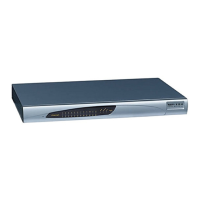
